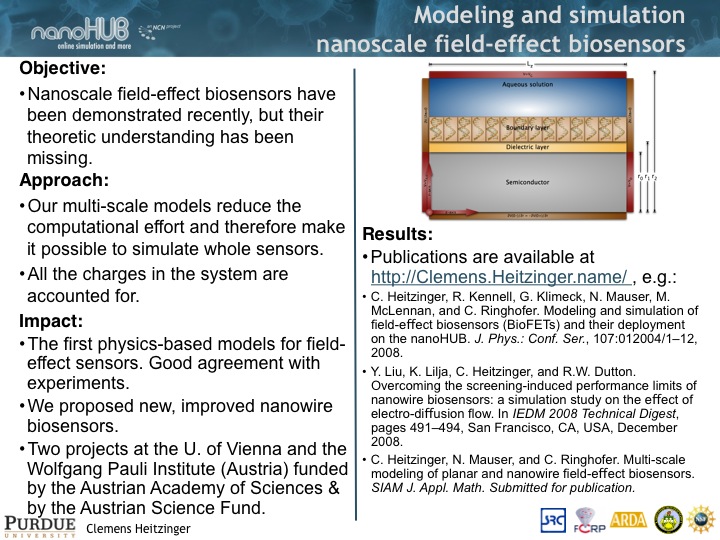|
Objective:
- Nanoscale field-effect biosensors have been demonstrated recently, but their theoretic understanding has been missing.
Approach:
- Our multi-scale models reduce the computational effort and therefore make it possible to simulate whole sensors.
- All the charges in the system are accounted for.
Impact
- The first physics-based models for field-effect sensors. Good agreement with experiments.
- We proposed new, improved nanowire biosensors.
- Two projects at the U. of Vienna and the Wolfgang Pauli Institute (Austria) funded by the Austrian Academy of Sciences & by the Austrian Science Fund.
Publication
- Publications are available at http://Clemens.Heitzinger.name/, e.g.:
- C. Heitzinger, R. Kennell, G. Klimeck, N. Mauser, M. McLennan, and C. Ringhofer. Modeling and simulation of field-effect biosensors (BioFETs) and their deployment on the nanoHUB. J. Phys.: Conf. Ser., 107:012004/1-12, 2008.
|

- Y. Liu, K. Lilja, C. Heitzinger, and R.W. Dutton. Overcoming the screening-induced performance limits of nanowire biosensors: a simulation study on the effect of electro-diffusion flow. In IEDM 2008 Technical Digest, pages 491-494, San Francisco, CA, USA, December 2008.
- C. Heitzinger, N. Mauser, and C. Ringhofer. Multi-scale modeling of planar and nanowire field-effect biosensors. SIAM J. Appl. Math. Submitted for publication.
|


